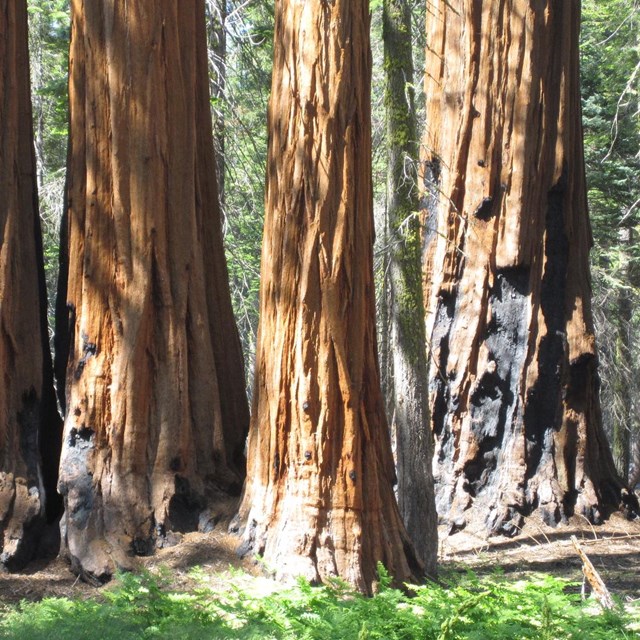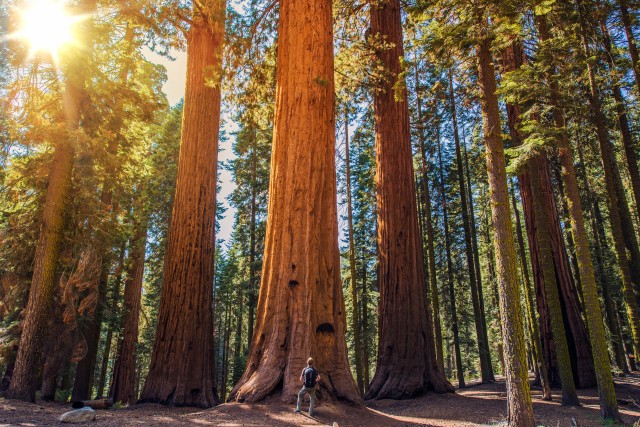Sequoia National Park Parking-- Where to Park During Your See
Sequoia National Park Parking-- Where to Park During Your See
Blog Article
Explore the Diverse Wild Animals Habitats Within Sequoia National Forest
Sequoia National Forest is an ecological prize, showcasing an impressive range of wild animals habitats that contribute to its rich biodiversity. From the marvelous gigantic sequoia forests to the diverse alpine meadows, each environment plays a vital function in supporting various types, consisting of both common and rare fauna. The interplay of these environments not just cultivates an one-of-a-kind environment but also underscores the importance of conservation efforts in keeping this balance. As we check out the specific features of these habitats, interesting questions emerge about the interconnectedness of life within this amazing landscape.
Overview of Sequoia National Forest
Sequoia National forest, snuggled in the southerly Sierra Nevada range of mountains of The golden state, is renowned for its breathtaking landscapes and towering large sequoias. Developed in 1890, it is just one of the earliest nationwide parks in the United States, committed to preserving the all-natural appeal and eco-friendly stability of this unique area. The park encompasses over 404,000 acres of diverse terrain, including marvelous hills, deep canyons, and lavish meadows.

Site visitors can explore countless treking trails, ranging from leisurely walks to difficult backcountry paths, each using a special viewpoint of the park's splendour. With its combination of natural marvels and leisure possibilities, Sequoia National forest serves as an important haven for both wild animals and those looking for to get in touch with nature.

Major Wild Animals Environments
The diverse landscapes of Sequoia National Park create a mosaic of wild animals environments that support an abundant variety of types. These environments range from rich fields and thick forests to rocky alpine zones and large river valleys, each offering unique ecological particular niches.
One popular habitat is the gigantic sequoia woodland, defined by towering trees and a rich understory, which sustains various animals, birds, and pests. The blended conifer woodlands, composed of varieties such as sugar want and white fir, offer extra sanctuary and food sources for wild animals.
Meadows and meadows play an essential duty in the park's environments, working as crucial foraging grounds for herbivores like deer and small creatures. These open areas also attract varied bird types, especially during migration periods.
The park's higher elevations include alpine environments, where conditions are rough and species are adjusted to endure in such extremes (Sequoia National Park hour). Here, one can locate unique vegetation and animals that flourish in rough, chilly atmospheres
Vegetation and Fauna Variety
Within the diverse communities of Sequoia National forest, an amazing range of vegetation and animals coexists, showcasing the elaborate relationships that maintain the park's biodiversity. The park is home to over 1,300 plant types, consisting of the renowned giant sequoias, which are among the biggest and oldest trees in the world. These stunning trees give necessary environment and food sources for numerous wild animals, promoting a complex web of ecological communications.
Pet varieties in Sequoia National Park are similarly varied, with habitats varying from lowland foothills to high towering atmospheres. Mammals such as black bears, mule deer, and bobcats thrive in this rich community, while bird species, consisting of the majestic gold eagle and the elusive spotted owl, grace the skies. Amphibians and reptiles, like the Sierra amphibian and the western rattlesnake, additionally play important duties in preserving ecological balance.
The park's one-of-a-kind combination of altitude gradients and microclimates supports these diverse species, highlighting the value of maintaining view it the natural habitats that permit such a rich tapestry of life to flourish. Recognizing this diversity is critical for valuing the ecological relevance of Sequoia National forest.
Preservation Initiatives in the Park
Conservation initiatives in Sequoia National Park play a vital duty in securing its distinct communities and the varied varieties that populate them. The park utilizes a complex technique, consisting of environment restoration, varieties keeping an eye on, and invasive types administration. These campaigns are crucial for preserving the fragile equilibrium of the park's communities, which include gigantic sequoias, meadows, and towering settings.
Energetic repair jobs concentrate on restoring indigenous plant neighborhoods and fixing up degraded environments. Sequoia National Park hour. This is particularly vital in locations impacted by human task or natural disturbances such as wildfires. The park's biologists conduct regular surveillance of key varieties, consisting of the endangered Sierra Nevada bighorn sheep, to analyze populace health and inform administration approaches
Invasive species pose a considerable danger to the park's biodiversity. Through these comprehensive efforts, Sequoia National Park makes every effort to protect its rich all-natural heritage for future generations while guaranteeing the durability of its diverse wildlife environments.
Tips for Wildlife Observation
Observing wildlife in Sequoia National Park provides an unique possibility to connect with nature and value the varied varieties that grow in this amazing habitat. To maximize your wildlife observation experience, take into consideration a number of vital ideas.
Firstly, strategy your browse through during morning or late mid-day, as these times are most active for numerous animals. Bring binoculars to observe wild animals from a risk-free range without interrupting their all-natural behavior. Furthermore, acquaint on your own with the varieties you intend to see; understanding their practices and environments can improve your opportunities of finding them.
Persistence is critical; wild animals observation usually requires waiting silently and recognizing your environments. Remain on assigned routes to minimize your effect on the ecosystem and guarantee your safety. It is additionally a good idea to preserve a respectful distance from animals, preventing any activities that can emphasize them or disrupt their setting.
Finally, take into consideration signing up with assisted tours led by educated park rangers. These specialists can offer useful insights and raise your opportunities of witnessing wild animals in their natural setups. By adhering to these suggestions, you can improve your experience and contribute to the conservation of Sequoia's wild animals.

Verdict
Sequoia National Park works as an essential haven for diverse wildlife, showcasing an exceptional selection of environments that support many types. The interaction in between huge sequoia woodlands, mixed conifer timberlands, fields, and alpine regions fosters a rich environmental tapestry. Ongoing conservation initiatives are crucial for maintaining these habitats and the distinct vegetation and fauna that populate them. Ultimately, the park's biodiversity emphasizes the importance of preserving such all-natural landscapes for future generations.
Please visit one of our local supporters - Https://wholesaleliquidationpallet.com/shop/
Report this page